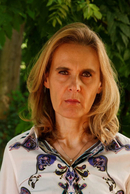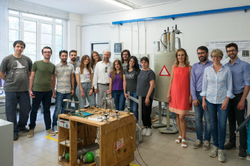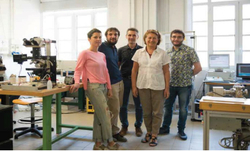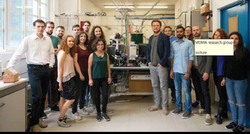University of Milano-Bicocca (UNIMIB)
University of Milano-Bicocca (UNIMIB)
The project will be carried on by 6 permanent researchers and about 10 PhD students and Post-doc belonging to the Department of Materials Science (DMS). DMS has 46 permanent research members with physics or chemistry background, who constitute a wide community with competencies in several experimental and theoretical Materials Science fields. Approximately one hundred post-docs and PhD students are also working in the Department. DMS is responsible of three university courses: Materials Sciences (degree and master course), Chemistry (degree and master course) and degree in Optical Technology, with a total of more than 300 students. The master course in Materials Science is partner of the SUMA international master EIT labelled programme supported by EIT-Raw Materials consortium in which UNIMIB is core partner. Moreover, DMS provides the PhD course in Materials Science and Nanotechnology (approximately 30 students). This course is also partner of the EIT labelled IDS-FUNMAT-INNO international project of EIT Raw Materials consortium. The Department is involved in several national and international projects (EU programs, bilateral projects). Principal research activities include dielectric materials, nanostructures, semiconductors, materials for electrochemistry and sensors, modeling and simulations. DMS was recently winner of the Italian Ministry of University and Research (MIUR) call “Dipartimenti di Eccellenza” (2018-2022).
Available in-house lab equipment includes standard synthesis equipment (fume-hoods, Schlenk-lines and vacuum pumps, glove boxes and centrifuges). The institute provides advanced characterization instrumentation including electron microscopy (low and high resolution TEMs and STEMs), single crystal X-ray diffraction (XRD), elemental analysis (ICP-AES, STEM), NMR facilities, advanced light scattering setups and a variety of optical spectroscopy/microscopy facilities.
Main equipment for synthesis and preparation of materials under inert atmosphere is available. Multiple characterization instruments dedicated to the study of porous materials encompass powder X-ray diffraction, solid state NMR (7 and 14 T) with variable temperature setups for the structural characterization, volumetric and gravimetric gas adsorption, microcalorimetry coupled with gas uptake, breakthrough for gas separation instruments for the determination of porosity and functional properties.
The Laboratory of Optical Spectroscopy of Molecular Semiconductors and Advanced Nanomaterials is equipped with setups for steady-state and time-resolved photoluminescence measurements (ps to s time ranges) in the visible-near UV and NIR regions, optical absorption measurements, confocal fluorescence setup up for continuous and time-resolved live cells fluorescence, confocal Raman microscopy, spectro-electrochemistry. A superconducting cryo-magnet (up to 5 Tesla) with variable temperature insert (1.5-300 K) for optical experiments in high magnetic fields and cryogenic temperature, and a photo-induced absorption setup in the ns time regime.
Radioluminescence experiments are carried on under X-ray irradiation from 10 to 300 K. Radioluminescence spectra are detected in the 200-1100 nm interval by using a home made setup featuring a three grating monochromator and a CCD as detection system. The system can be operated also in phosphorescence mode. Defects in materials are investigated by wavelength resolved thermoluminescence in the 200 – 1100 nm interval, and from 10 K to 700 K.
Principal investigators
 |
Angiolina Comotti got her PhD in Chemistry in 1998, and was appointed as an Assistant Professor of Physical Chemistry in 2001 at the University of Milano Bicocca where she is currently Full Professor of Industrial Chemistry. She held a Fellowship at ETH in Zurich, and was visiting scientist at Cambridge University, New York University and University of Strasbourg. She was in charge of neutron and X-ray diffraction experiments at European Facilities (ISIS-Oxford and ESRF-Grenoble). Her research activity includes the synthesis and characterization of functional porous materials such as mesoporous materials, 3D porous polymers and metal organic frameworks. She has a deep qualification in solid state NMR, powder diffraction, calorimetric and gas adsorption analyses. |
 |
 |
 |
| Synthesis and Characterization group | Radioluminescence group | Photonics group |



